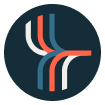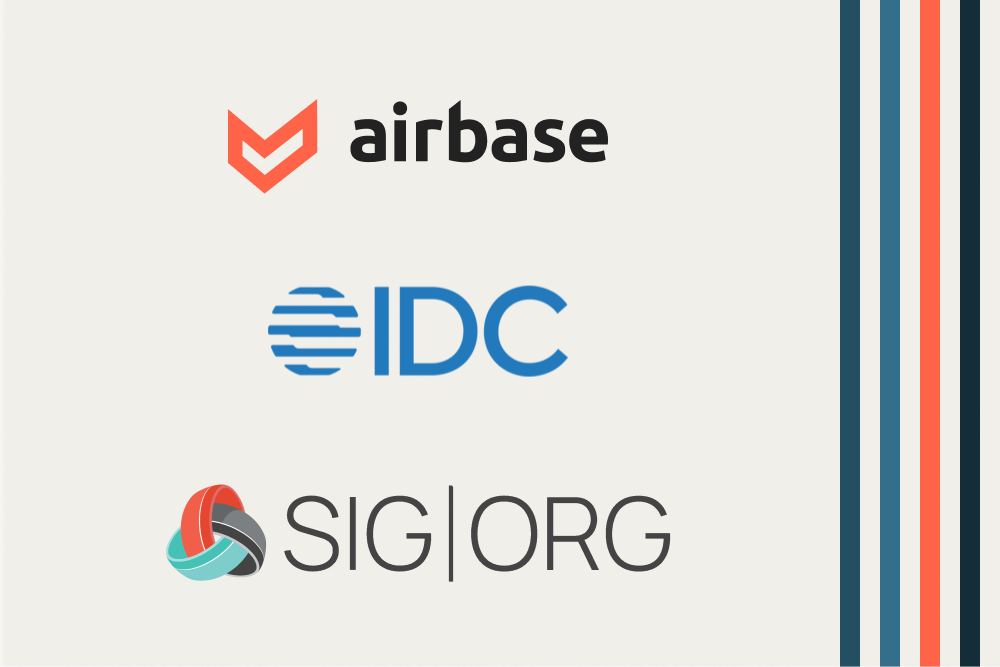Patrick Reymann, procurement expert and industry analyst at IDC, says technology is driving a revolution in procurement. Speaking with Airbase CFO, Aneal Vallurupalli, at a recent SIG webinar called “Navigating the Future of Procure-to-Pay,” Patrick explains that the tools available for procurement have improved greatly in just a couple of years.
The shift allows procurement to trade a tactical set of ad hoc practices for a strategic operation with important implications for the bottom line. Whereas historically, platforms were backward-looking, “they’ve evolved into really informed, intelligent tools to support the optimization of spend management,” he explains.
According to Patrick, at the core of this technological transformation is more user-friendly, collaborative software that requires minimal training and can be easily adopted by all employees. In contrast, legacy platforms were designed for a core group of highly skilled users, even though procurement is a process most employees need to be involved with at some point.
A shift in the landscape.
As an industry analyst, Patrick sees the growth in procurement solutions outstripping accounting software in general. The market for procurement applications is projected to reach $12.2 billion by 2027, with a growth rate of 9.2%. In contrast, more general accounting software is expected to grow by about 7.47% in the same period.
To a large extent, this has to do with the widespread adoption of cloud-based digital tools and also making procurement solutions that were once only accessible to large enterprises available to smaller enterprises and mid-market organizations.
As a software company helping to build this new future of procurement, Airbase is focused on bringing the most advanced technology and intuitive user experience to solve cost-cutting and compliance challenges that procurement teams own.
Moreover, we are committed to bringing the discipline of procurement to broader areas, including spend that falls outside of the procurement team’s purview, known as tail spend.
The evolution of spend management.
Patrick makes the point that while the spend management needed to run an efficient and effective procurement operation may seem easy, it’s actually a very difficult problem to solve.
Over the past few years, the procurement space has witnessed significant advancements, particularly in the area of spend management. Traditional spend management tools were designed for procurement and finance professionals, but they’ve evolved to become more intuitive and user-friendly.
Automation and artificial intelligence (AI) have become integral parts of spend management platforms, with the emergence of Gen AI making a significant impact since late 2022. These advancements have made it an exciting time for both providers and users in the procurement space.
“Compare that to today’s [spend management platforms]. These are intuitive, extraordinarily user-friendly tools, infused with automation and artificial intelligence.”
Expanding user base and improved user experience.
As awareness of the benefits of fully automated digital procurement solutions grows, spend management tools have expanded their capabilities to cater to a wider user base, including mid-market companies and small to medium-sized businesses (SMBs). But a reimagining was needed to effectively reach these organizations.
“When you come downmarket, you have to ruthlessly prioritize user experience,” Aneal notes, explaining that mid-market and SMB companies don’t have large procurement and AP teams to handle all aspects of spend management. “We need the tools to work, and we need the users in the company to be able to use the tool,” he continues.
This shift in user experience marks a significant change in the landscape of spend management. It leads to higher adoption rates and, therefore, more spend under management (SUM).
“That has the effect of reducing rogue spend and providing visibility across the board,” Patrick says. He adds, “It’s a very simple question to ask ‘Where are we spending our money?’ The concept is simple. But in practice, it’s difficult.”

Guided Procurement Tour
Explore our automated procurement workflows in the Guided Procurement tour.
Redefining procurement to include all spend.
The ability to manage non-payroll spend and direct or indirect spend through a single system is essential to increase SUM.
With the goal to increase SUM and reduce rogue spend, many organizations use multiple platforms for their spend management ecosystem, which requires seamless integration between applications. Leading procurement applications often integrate with an organization’s ERP.
The growth rate in procurement technology indicates that solution providers are effectively addressing the challenge of managing SUM. Legacy processes may not be efficient or effective, and they may not meet the needs of organizations in today’s fast-paced business environment.
Building a tool that can handle global subsidiaries and suppliers is a challenging task that takes time. The fast growth rate of this new generation of procurement tools confirms that solution providers are becoming more aware of the importance of increasing SUM.
Change management in the age of digital transformation.
Patrick points out that many organizations are still in the early stages of their digital transformation journey, with a short-term focus on spend management rather than a coherent long-term strategy. Defining goals is a key part of strategy development.
“It is not uncommon for entities to be doing this all manually. Spreadsheets are still the tool of procurement. For some entities, it’s enough to digitize these transactions,” says Patrick. “That is digital transformation. Others need to go further along that continuum.”
Patrick explains that the digital transformation in spend management is often misunderstood, with many believing it is solely about the application of technology. In fact, it requires a cultural change within organizations, and individuals at all levels can contribute to this transformation.
Both Aneal and Patrick agree that awareness of the possibilities of procurement solutions is often lacking. Software solutions are innovating at a pace that moves faster than the pace at which users and administrators can adapt — unless there is a strong focus on education.
Identifying pain points for all stakeholders helps prioritize and determine the roadmap to digitization. Patrick says organizations need to reorient their thinking and consider all roles impacted by procurement when evaluating a procurement solution.
“Every persona is dramatically impacted by this decision and has a role to play in the procurement process.”
Looking ahead.
Patrick sees continued automation of manual processes as a top focus for organizations in the next 12 to 18 months.
The use of AI in spend management applications will continue to grow at a rapid pace, with generative AI creating content and leveraging predictive capabilities. He recommends asking providers about specific use cases of AI in their applications and how it can facilitate their procurement journey.
“Let’s really distill it down to what can this do for me. How can this application use AI to solve my problem,” he adds.
Streamlining spend management with orchestration.
Spend orchestration is the strategic coordination of procurement processes. It’s a new subcategory within the spend management space, and it requires a single collaborative platform that connects with all stakeholders.
These platforms are built with AI in mind and often feature a “what do you want to do today?” input. They increase transparency and provide a holistic view of SUM, facilitating risk and compliance management.
Spend orchestration is evolving quickly, with significant advancements made in the last two years. It streamlines and optimizes the process of managing and controlling company spending, automating tasks such as approvals, budget tracking, vendor management, and financial reporting.
It enables real-time visibility and control over spending, reducing the need for manual intervention and error-prone processes. Spend orchestration helps companies make data-driven decisions, identify cost-saving opportunities, and optimize their procurement processes. It overcomes the inherent difficulties of managing often chaotic spending across a company.
Spend orchestration requires collaboration between all stakeholders, so it often relies on connectivity with business systems like Slack, Asana, or Jira. Approval requests come to the approver right in their own environment, while the spend orchestration occurs in a single tool.
Patrick says that as the procurement landscape continues to evolve, the future of procure-to-pay holds exciting prospects for mid-market to enterprise-sized companies. As a result, these entities vastly improve their SUM, particularly in regards to tail spend. The push toward digitization, improved UI, and the adoption of AI and automation will drive greater efficiency and cost savings.
By prioritizing user experience, collaboration, and automation, new systems can streamline your procurement processes and achieve significant time savings, improved productivity, and better cost control.
See how Airbase represents the next generation of P2P solutions — book a demo with us!
 Jira Integration – Streamline Your Workflows
Jira Integration – Streamline Your Workflows  Ironclad Integration – Simplify Legal Operations
Ironclad Integration – Simplify Legal Operations  Asana
Asana 




